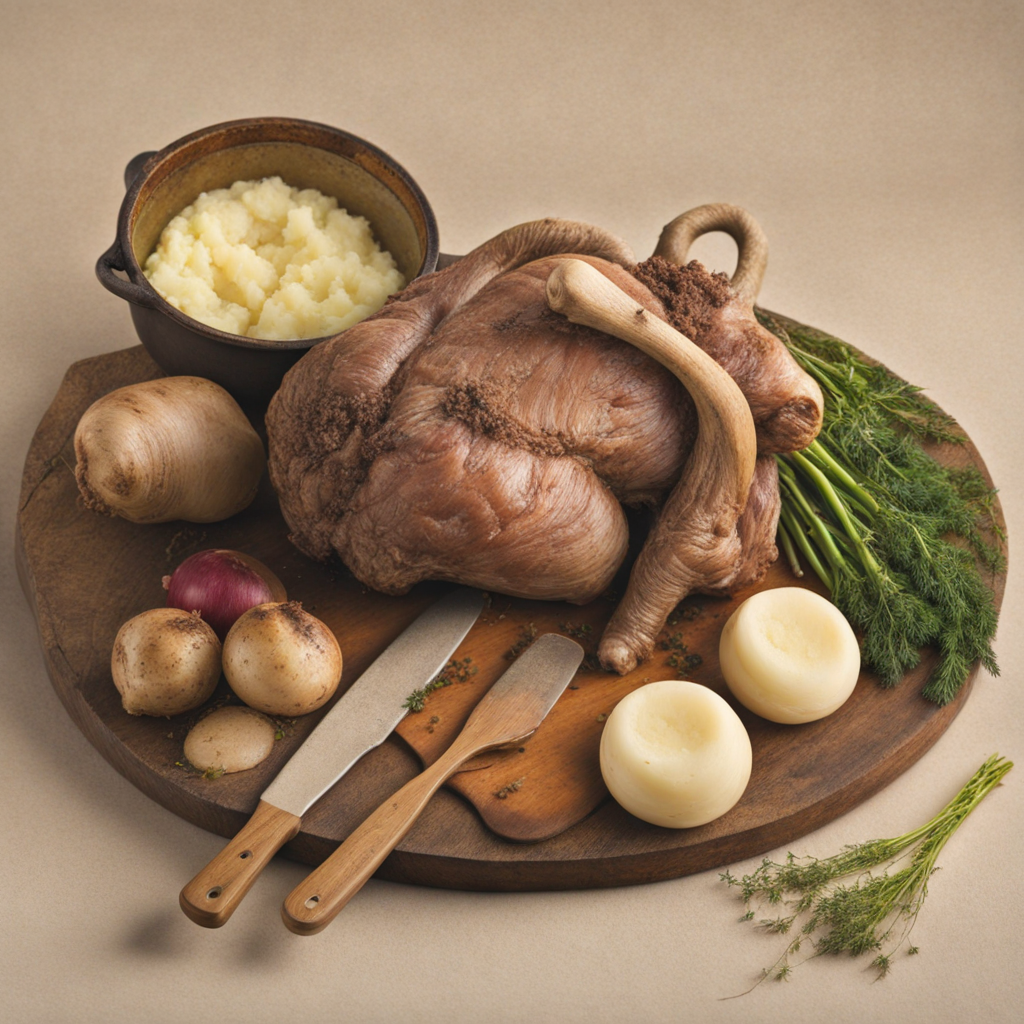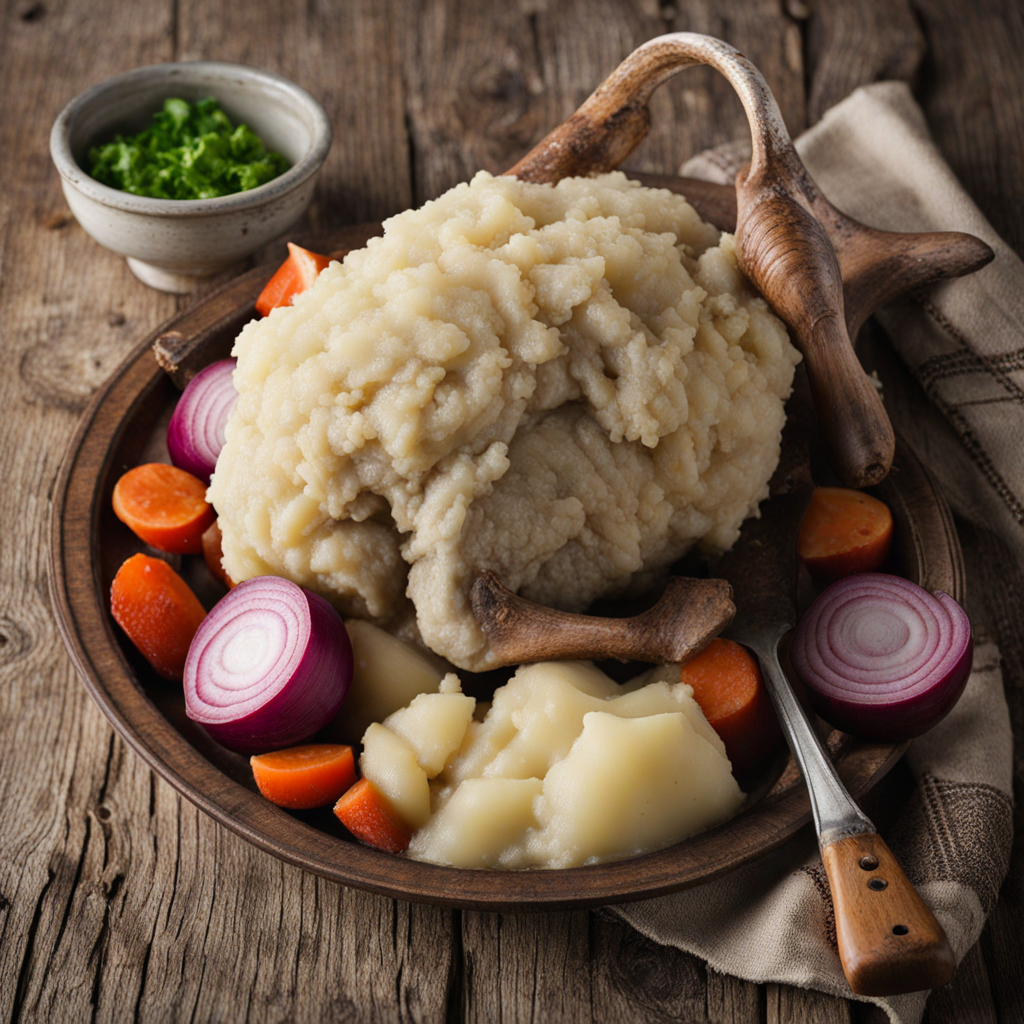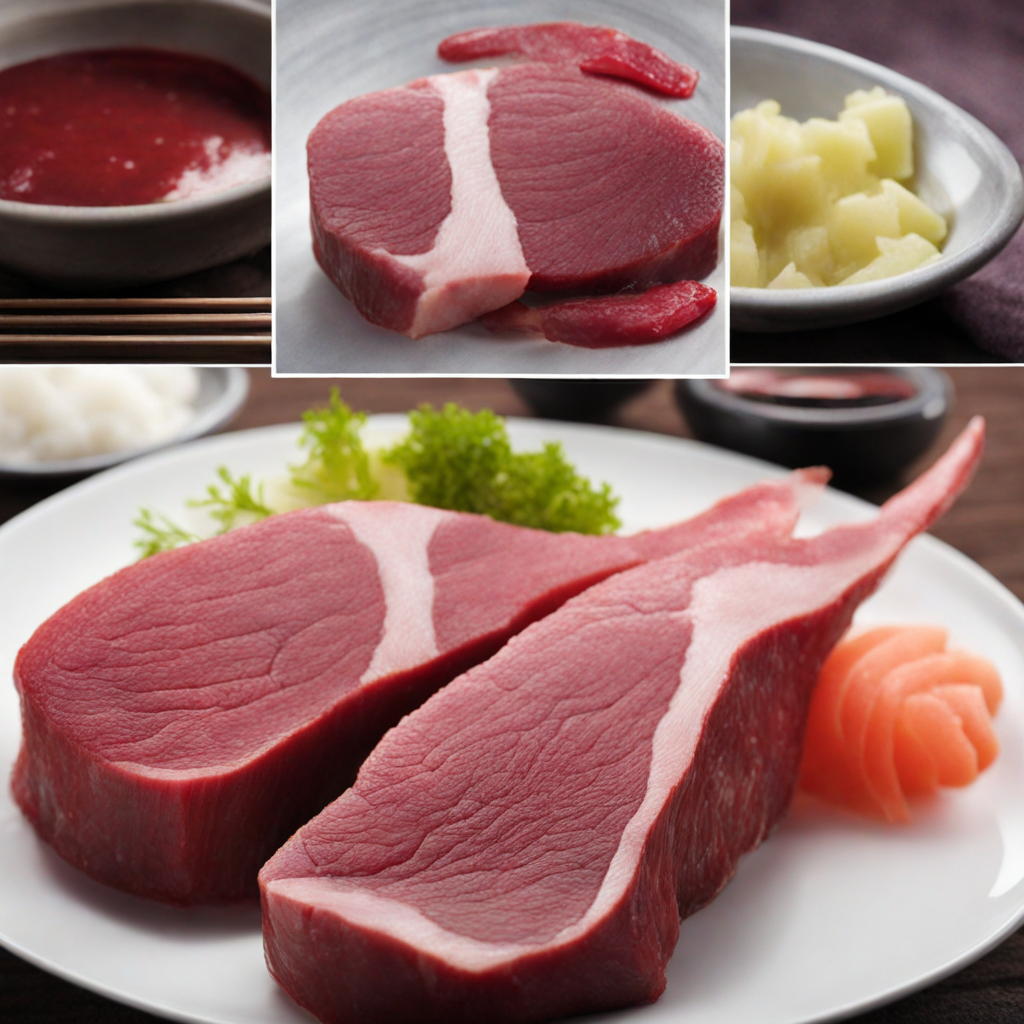Svið
Svið is a traditional Icelandic dish that offers a unique and adventurous culinary experience. It consists of sheep's head that has been singed and boiled, resulting in a dish that is both rustic and deeply rooted in Icelandic heritage. The preparation of Svið highlights the resourcefulness of Icelandic cuisine, where every part of the animal is utilized. The dish is often served with mashed potatoes and a side of rutabaga, allowing the rich, savory flavors of the meat to shine through while balancing the dish with creamy textures and earthy notes. The taste of Svið is distinct, with the meat being tender and infused with a smoky essence from the singeing process. Diners can expect a robust flavor profile that reflects the traditional methods of preparation. The gelatinous texture of the head meat, combined with the rich broth it is cooked in, results in a dish that is both comforting and satisfying. It's a dish that may challenge the palate but rewards those who are willing to embrace its boldness. Eating Svið is not just about the food; it is an experience that connects you to Iceland’s history and culture. Often enjoyed during festive occasions, it brings people together in celebration of their heritage. Those looking to expand their culinary horizons will find Svið to be an intriguing entry point into the world of traditional Icelandic fare, offering a taste that is as rich in story as it is in flavor.
How It Became This Dish
Origins of Svið Svið, a traditional Icelandic dish, has its roots in the country's Viking heritage. This dish consists of singed sheep's head, which reflects the resourcefulness and ingenuity of the early Icelandic settlers. The Vikings, known for their seafaring and exploratory nature, brought with them various culinary practices that were adapted to the sparse and harsh environment of Iceland. In a time when every part of an animal was utilized to prevent waste, cooking with the head of the sheep was not only practical but also a testament to the deep connection between the Icelanders and their livestock. The process of preparing Svið begins by removing the wool from the sheep's head and singeing it over an open flame, a method that imparts a unique flavor while preserving the integrity of the meat. The head is then boiled until tender, often served with mashed potatoes or rutabaga. This method of cooking demonstrates a profound understanding of utilizing available resources, showcasing the ingenuity of the Icelandic people in adapting to their environment. Cultural Significance of Svið Svið holds a significant place in Icelandic culture, particularly during the Þorrablót festival, which celebrates the midwinter season. This festival, rooted in pre-Christian traditions, is a time for communities to come together and honor their Norse heritage. Svið is often served alongside other traditional foods, such as fermented shark (hákarl) and black pudding (blóðmör), creating a communal dining experience that emphasizes the importance of preserving cultural identity. The consumption of Svið is more than just a gastronomic experience; it symbolizes resilience and the ability to make use of all available resources. In a country where agriculture is often challenging due to the climate and geography, Svið represents an enduring bond between the Icelanders and their land. This dish is a reminder of the hardships faced by the ancestors and how they adapted their culinary practices to thrive in a demanding environment. Development Over Time As Iceland transitioned into the modern era, the preparation and presentation of Svið evolved, influenced by both internal and external factors. While the traditional method of cooking Svið remains largely unchanged, contemporary interpretations have emerged. Modern chefs have begun to experiment with flavors and presentation, incorporating elements of fine dining while still respecting the dish's historical roots. In recent years, there has been a resurgence of interest in traditional Icelandic cuisine, with Svið being celebrated as a symbol of cultural heritage. This revival has been fueled by a growing movement toward sustainable eating and farm-to-table principles, echoing the resourceful practices of the past. Chefs and home cooks alike are rediscovering the value of nose-to-tail cooking, emphasizing the importance of utilizing every part of an animal in a respectful manner. Svið in Modern Iceland Today, Svið is often featured in restaurants and culinary festivals across Iceland, serving as both a reminder of the past and a point of pride for the Icelandic people. Tourists seeking an authentic Icelandic experience are encouraged to try Svið, which often leads to conversations about its origins and significance. The dish acts as a bridge between generations, connecting the modern populace with their ancestors and their way of life. Furthermore, Svið has also sparked discussions about food sustainability and the importance of preserving traditional food practices. As global interest in local and authentic foods grows, Icelanders are increasingly aware of the value of their culinary heritage. Svið stands as a powerful symbol in this dialogue, illustrating how traditional dishes can evolve while retaining their cultural significance. Challenges and Resilience Despite its cultural importance, Svið faces challenges in the modern culinary landscape. As Iceland becomes more urbanized and influenced by global cuisine, traditional foods risk being overshadowed or forgotten. However, the enduring popularity of Svið at festivals and restaurants demonstrates the resilience of Icelandic culinary traditions. Many Icelanders are committed to preserving their food heritage, recognizing that dishes like Svið tell the story of their ancestors and the land they inhabit. This commitment to tradition is evident in the way Svið is prepared and served, often accompanied by tales of family history and cultural significance. These narratives enhance the dining experience, allowing both locals and visitors to appreciate the depth of Icelandic culture. Conclusion: A Dish of Heritage In conclusion, Svið is much more than just a dish; it is a representation of Iceland's rich history, cultural significance, and resilience. From its origins in Viking times to its modern-day interpretations, Svið has endured as a symbol of resourcefulness and community. As Iceland continues to navigate the complexities of globalization and modernization, the enduring presence of Svið in Icelandic cuisine serves as a reminder of the importance of heritage, sustainability, and connection to the land. As Icelanders and visitors alike gather to enjoy Svið, they partake in a culinary tradition that transcends time, fostering a sense of unity and pride in their shared history. Through the lens of Svið, one can appreciate the profound relationship between food, culture, and identity that continues to thrive in Iceland today.
You may like
Discover local flavors from Iceland







